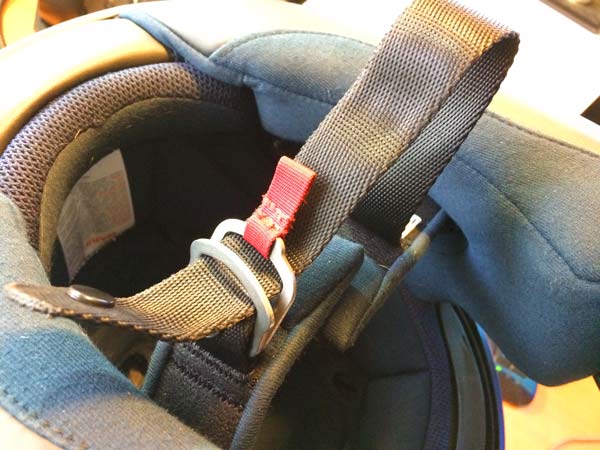Motorcycle helmets are one of the most important pieces of safety gear for riders. They protect your head in the event of a crash and can help prevent serious injuries. While most modern helmets are designed to be easy to use, it’s still important to know how to properly buckle and adjust your helmet before heading out on the road.
Here’s a quick guide on how to do just that.
- First, make sure that the helmet is the correct size for your head
- If it is too large or small, it will not protect you properly in the event of an accident
- Next, put the helmet on your head and fasten the chin strap
- The strap should be snug but not so tight that it is uncomfortable
- Once the chin strap is fastened, adjust the straps on either side of the helmet to ensure a secure fit
- Finally, check to make sure that the visor is in place and secured before heading out on your motorcycle

Credit: www.youtube.com
How Do You Put a Buckle on a Helmet?
Most helmets have a D-ring or quick release buckle that you thread the strap through. The helmet should fit snugly and the straps should be tight enough that you can only fit one or two fingers under them. You may need to adjust the straps as you ride to keep the helmet from moving around.
How Do You Buckle a Helmet Strap?
Assuming you are asking how to properly buckle a helmet:
It is important to make sure the helmet is level on your head before tightening the straps. The front of the helmet should sit about an inch above your eyebrows.
The side straps should come together just below your ears and fasten together by Velcro, plastic snaps, or metal clips. Once the straps are fastened, you can adjust the tightness of the helmet by pulling down on the back edge of the helmet. You can also loosen or tighten the chin strap.
Why Motorcycle Helmets Use This Ancient Buckle?
Most motorcycle helmets use a D-ring buckle, which is the same type of buckle that was used on ancient Roman armor. The reason for this is that the D-ring buckle is very strong and secure, making it unlikely that your helmet will come off in an accident. Additionally, the D-ring buckle is easy to use, even when you’re wearing gloves, so you can quickly put on your helmet when you’re ready to ride.
How Do You Secure Your Helmet to Your Motorcycle?
Assuming you are referring to a full face motorcycle helmet, there are typically four straps that need to be secured. Two at the bottom of the helmet under your chin and two on either side of your head just above your ears. The straps should be tightened so that the helmet does not move around on your head and obstruct your vision, but not so tight that it is uncomfortable.
You also want to make sure that the visor is down and locked in place before you start riding.
D-Ring helmet tutorial | How to fasten double D-link?? 🤔 🤔 | Step by Step guide | 390 degrees
Motorcycle Helmet Strap Quick Release
If you’re a motorcycle rider, then you know how important it is to have a good helmet. But even the best helmet can be uncomfortable if the strap isn’t adjusted properly. That’s why many riders prefer to use a quick release strap on their helmets.
A quick release strap is exactly what it sounds like – a strap that can be released quickly and easily. Most quick release straps are made from nylon or other synthetic materials, and they usually have a plastic or metal buckle. Quick release straps are easy to adjust, so you can get the perfect fit every time you put on your helmet.
And if you need to take your helmet off in a hurry, simply pull the tab on the buckle and the strap will come undone.
Quick release straps are available at most motorcycle stores, and they’re relatively inexpensive. If you’re not sure which type of strap to buy, ask a salesperson for help.
Conclusion
Assuming you would like a summary of the blog post titled “How to Buckle a Motorcycle Helmet”:
Most motorcycle helmets have a D-ring closure system. To buckle your helmet, start by threading the strap through the back loops and pulling it tight.
Next, feed the end of the strap through the D-ring and pull it until there is no slack left in the strap. Finally, tuck the excess strap under the chin guard or tuck it into one of the ventilation holes.
